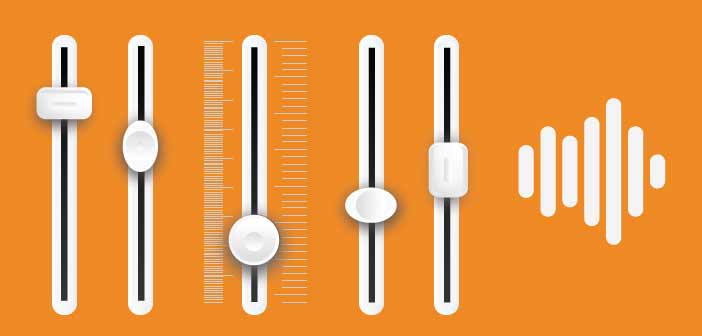What voiceover tools do you need to use?
We all are short of time and so learning how to use a bunch of tools can be quite daunting. However, every profession has tools that they need to master in order to progress, and being in voiceover is no different.
The question though is which tools to use, what do they cost and how will they help you?
Whenever I look for new tools I generally assess them based on price, ease of use and what benefit they provide. What I mean by benefit is… do they help do things faster, better, be more productive…. and help me get work.
With the explosion of technology, there are more tools, apps and ways of doing things than ever before, and it can be overwhelming trying to sift through masses of information trying to find something that works for you. You also have to remember that you are competing with others for work, so I always try to remember that if I want to succeed, I need to be better than others, work effectively and use my time wisely – so work smart. A cliche but true.
Knowing you have to compete helps you to focus on using your time to achieve your goals.
This list of voiceover tools covers not only recording software, which you would expect, but other tools that are essentially there to help you be productive, market yourself and achieve your goals.
The Essential List Of Voiceover Tools
In today’s busy world we all need to use a range of tools to help us get things done. First of all, let’s cover what I mean by voiceover tools.
Recently, I wrote a blog on what are voiceover skills. It shows the wide range of skills you need to be a successful voiceover actor.
There is another side to this as well. Unlike a nine-to-five job you can often be managing different projects and clients at once, have different deadlines, multiple places to travel and different invoices to raise. This all means that you can end up with a lot to sort out and it can quickly become disorganised or at best a big task to sort through manually.
This is why we need to be able to pick from a useful list of voiceover tools to help you. There is also a range of tools to help you with producing and sorting out your showreel production as well.
The list of voiceover tools then is broken down into categories so you can easily pick which ones are right for you.
#1 – List of voiceover tools – Voice Work
Choosing the right equipment for voiceover work is essential. For example, if you use a poor quality microphone it is then hard (if not impossible) to produce a good enough quality showreel… even with the best software.
Essential Voiceover Tools

On a day to day basis you need to practice reading different types of voiceover scripts to build a repertoire of voice acting skills. Practicing though is only one part of what you need to do, you also need to listen to your own voice and critically review and improve your voice skills.
Most voiceover actors working from home have an essential set of equipment to do this.
PC or Laptop
You need one of these to manage your voiceover business – finances, planning, marketing, communication with clients…as well as recording and editing your voice recordings and your dialogue.
Voiceover Microphone
If you want to read more about our review of the best voiceover microphones based on your budget click the link.
Studio Headphones
It’s important to use a good pair of headphones when recording your voiceovers because a) you don’t want the microphone to pick up sound from your speakers, or even sound egress from poor quality headphones and b) you don’t want to trash your ears. ‘Cans’ also are a pre-requisite when working in professional studios to communicate with the engineer and the director, so it’s worth getting used to voicing with cans on.
If you’re recording to picture, your headphones allow you to listen to video playback without speakers. It’s pretty obvious that If you record voiceovers with speakers/foldback on, the sound quality will decrease and you can even end up with a feedback loop. That’s not great fun….
So the question is what type of headphones do you need for voiceovers?
The best headphones to use for recording voice-overs are closed-back, ‘circumaural’ headphones. As the name implies, the back of the ear cups on closed-back headphones are solid, which prevents sound from leaking (and so it means there is less noise picked up by the microphone). Here at GFTB the team uses Beyerdynamic DT250’s and swear by them!
If you’re not a fan of large headphones that enclose your ears you can also use ear-buds as long as they do not emit sound (e.g., ones with noise cancellation on).
Microphone Stand:
The microphone stand is there to keep your microphone in a fixed position so your recordings will be more consistent and even-sounding. The cost of a stand can vary enormously. Bear in mind that if you’re in a home studio the stand may well be a microphone ‘arm’ which is mounted to a wall and easily located in a 3-d space. In general we do not recommend desk-mounted stands as they tend to pick up large amounts of vibration and low-frequency noise due to the table they are placed on.
Shock-Mount
A good shock-mount suspends the microphone via a small network of elastic bands, and reduces any unwanted vibrations and noise, especially low frequency noise that travels through buildings, floors, air-con systems and ceilings. These are definitely recommended for professional recordings, and let’s be honest, look the part!
Pop Filters
These remove the plosive sounds that the mouth makes by blocking the air hitting the mic’s diaphragm capsule. These are essential, but can be home-made for those on a budget with a pair of tights and a coathanger…
Acoustic Treatment:
Being able to hear the ambience of a room can be very distracting in a voiceover, so it must be controlled if you aim to achieve professional results. This is a huge topic, but in essence the idea is to remove any unwanted reflection noises in a room, thus ‘deadening’ the sound.
Voiceover Tools – Recording Software
Free programs like Garageband and Audacity are great to start with, but as you progress you will find that you will want to do more and refine your recording capabilities and become more professional in your approach. Keep in mind that there may be additional fees for add-ons and plug-ins as you need them. These prices are only indicative and may vary.
| Software | Compatability | Features | Price |
|---|---|---|---|
| Adobe Audition | Mac OS X; Windows | Automatic speech alignment; pitch correction; parameter automation; HD video playback; clip spotting; cross-platform design. Importantly has an editor view and a (limited) multitrack view. This is a professional program. | $15 p/m |
| Audacity | Mac OS X; Windows | Conversion and remastering for old recordings; multi-track recording; multi-file import and export; sync-lock tracks. Does have issues but good for starters. | Free |
| Sound Forge | Mac OS X; Windows | Noise reduction plug-ins; musical instrument file processing; floating window docks; tabbed browsing; interactive tutorials. This is a professional sound editor. | $399 |
| Pro tools | Mac OS X; Windows | 64-bit sound engine, powerful AAX plug-ins, killer virtual instruments, and extensive range of other features, Avid Pro Tools provides professional level toolset and is used throughout the world. It is a multi-track environment. | $599 |
| Logic Pro | Mac OS X | Logic Pro provides easy to use audio and recording facilities for voiceovers. It is affordable compared to other recording software in the industry but includes just as much audio recording and production power. Again, is a multi-track environment. | $199 |
| Garageband | Mac OS X | This Apple only audio recording and editing software is easy to use. It can also be used as voice over software to create radio style shows, record and edit voiceovers; record interviews add jingles or sound effects. Is very limited in it’s capabilities and doesn’t have audio-metering which is essential for professional use. | $5.99 |
| Twisted Wave | Mac OS X | TwistedWave is a an easy to use audio editor. It supports Audio Unit plug-ins and many file formats, has good multichannel and lets you easily add, remove or reorder channels. | $79 |
| Reaper | Mac OS X; Windows | Reaper provides a powerful and simple to use set of recording tools that is inexpensive, yet professional-grade. At the time of writing is in it’s infancy compared to other programs but is improving. Does have issues with plugins like the compressor which doesn’t have proper levelling. | $60 |
| Cubase | Mac OS X; Windows | MIDI composing and sequencing; music notation; chord generator; multi-track editing; warp quantizing; user community. This is a professional level multi-track system and also a music production system. This is GFTB’s program of choice coupled with Audition on a mac or Soundforge on a PC. | $500 |
#2 – List of Voiceover tools – Productivity

As a voiceover professional you will need to constantly ensure you are being productive to achieve your goals. That means being well organised and attending to all the different aspects of developing your voiceover career.
Of course you can use a notepad and pen to do this but there are far more effective tools that can help you stay on top of your workload.
Many of these tools work online (in the cloud), so they can be accessed anywhere, and many are available as apps for your phone both on Android and Apple.
There are some basic types of productivity tools:
- Notes taking and organising
- Task Management
- Calendars/Schedulers
- Time Tracking
- Project Management
- Annotate/Script Readers
- Spreadsheets
#1 Note taking – is about being able to makes notes, organise them and use them to then help you with your workload. As a voiceover actor you will need to make notes during client briefs, organise your thoughts possibly as a checklist of actions, sketch out ideas or simply make notes from a course.
#2 Task Mangement – managing tasks and prioritising them is all part of making sure you are focused on doing the right things and getting them done. It is all too easy for people to naturally prioritise what they like doing first and to leave harder tasks to later or simply keep putting them off. Using task management tools it helps you to understand and track how productive you are on a day a day basis.
#3 Calendar / Schedules – if you are working on lots of projects you need to schedule your time effectively allowing time for book keeping, marketing, networking, client work and very importantly planning time. Planning time is often overlooked by people and so they do not make time to review how they are doing, if they are achieving their goals and what they need to change.
#4 Time Tracking – time trackers help keep you focused and review where your time is being spent. Emails are often time killers as is browsing the internet and getting distracted from you doing the tasks that matter. Another time killer is poorly planned meetings.
#5 Project Management – this will depend on what projects you have and how big they are. A project like creating your own website would be a good example of a project that can involve a lot of planning to get right.
#6 Annotate/Script Readers – these pieces of software give you assistance with your scripts when recording in the booth.
#7 Spreadsheets – as well as organising notes you will often need to create and use spreadsheets. Free tools like Google docs provides the easy to use Google sheets which are stored online and accessible as long as you have an internet connection, and can also be used offline. Alternatively you can use Microsoft Excel which is now available as part of the Office365 suite.
List of Voiceover tools for productivity
#1 – Rescue Time
Rescue time does what it says on the tin, so to speak. It is software program that you install on to your computer to monitor how you spend you time. It tracks ‘personal productivity’ – or more precisely, productive time. Once installed Rescue Time works in the background monitoring daily activities as well as blocking websites.
#2 – ColdTurkey
Cold Turkey as its name suggests, quickly and harshly stops your habit of using distractions instead of focusing on tasks and getting work done. It may sound harsh but this is like a personal trainer who tells you how it is. It blocks sites and other apps on your computer for the period time you decide and then that is it.
#3 – Strides
Strides is one of the best productivity tools to help you measure how well you are achieving your goals.
Smart working means that you plan your personal goals, translate them into clear objectives and have clear milestones as checks to check how well you are doing. Smart means changing your habits not just doing more tasks in a given day. This is where Strides helps you by tracking your goals/habits.
#4 – Workflow
This is an iOS task automation app that allows you to quickly cook up recipes of repetitive and time consuming app or phone tasks into a single tap.
#5 – LastPass
You never need waste time fiddling with your logins and passwords ever again with the LastPass mobile app. The LastPass Premium app (Android, iOS, WP8) is a password vault, strong password generator and browser all rolled into a single mobile app.
#6 – Evernote
Evernote is one of the premier cross-platform note-taking services, allowing users to take and upload notes, pictures, audio and video snippets and organize them into cloud notebooks that can be synced across different devices.
- Cloudwards.net put togethor a decent comparison list for different note readers that you can check out here put togethor a decent comparison list for different note readers that you can check out here
#7 – Nozebe
Nozbe is a great and intuitive project management tool that works on the Get Things Done (GTD) methodology. Easily create projects with task lists that you can view by project. You can also view all of your tasks by context.
#8 – AnyDo
Any.do is an excellent and feature-packed app for creating to-do lists, reminders, events and other notes for getting things done. Any.do features easy task input, which can be typed in or dictated, complete with a touch interface for easily dragging and dropping tasks into various categories or for marking tasks as accomplished.
#3 – List of voiceover tools – Marketing

Well, you might ask what tools you could possibly use for marketing. Again, this will depend on where you are in your voiceover career and what your goals are.
If you are using social media then you want to be able to easily manage your social channels not only for posting but also to track and respond to people. Managing your presence (your brand) across the internet is equals important especially if you are actively promoting yourself and using PR as tactically to do this.
This is a basic list of voiceover marketing tools but they should give you an idea of what is possible and what you can achieve.
#1 – WordPress
If you want a good and easy to use website then build one in WordPress or ask us for more details on this service. Your website is your online CV and portfolio of work to show any prospective clients. It is your opportunity to stand out from the crowd.
#2 – HootSuite
Hoot suite is an excellent tool for posting to social media and replying to people. Easy to use and low cost this is a great tool for those getting started with social media.
#3 – Linkedin
Linkedin is the largest professional network in the world and a key platform to use to demonstrate your career progression. Make sure you use the right keywords and build in testimonials from clients to increase opportunities for others to check your services.
#4 – Mention
Listen for jobs being posted about voiceover, track what is going on in the industry and what is being said about you.
#5 – About.me
About.me allows you to create a personal homepage with a very user-friendly URL (about.me/your-name). Even though it won’t help you actively monitor or promote your brand, it ought to be part of any personal branding toolkit. It’s also an excellent alternative to BrandYourself.
Remember “Selling ourselves” to others is the unselfish reaching out to other people, to show them how we can help them. Because to simply assume that potential clients should be able to understand from our skills and how great we are is the true selfishness.
Good marketing brings the benefits of good products and services to the attention of people who need or want those products or services.
Bad (ineffective) marketing says, “I’m a wonderful voiceover and you should buy my services because I’m so wonderful.” Good marketing (and by “good” I mean effective) says, “My services are great because they will help you do this, solve that problem, and feel good.”
Now here is the thing….do you know the problems your customers face? How can you make their life easier, faster or better as a voiceover.
One of the reasons top voiceover actors get booked is because the agent or client knows they won’t take long to ‘get’ the script, when recording they can do it in one go and will quickly choose the right voice to fit the job. All those benefits = more work.
#5 – List of voiceover tools – Business/Finance

I have spoken about productivity, and managing your administrative tasks especially around money is vital. Keeping track of expenses, invoicing clients, tax and payments will help you feel more in control of your voiceover career. The good news is that these tools make so much of this super easy.
I would highly recommend you invest in using these tools on a phone and making sure you do things as you go rather than putting them off. A good example is to record your expenses as they happen so that you have an accurate record of all the costs associated with any client work. That way you will understand what your true profit is from any given piece of work.
#1 – Shoebox
Shoebox allows you to simply save time by sending receipts to be scanned and recorded. This is often the bain of every business owner – ShoeBox saves you hours of time.
#2 – Freshbooks
Freshbooks is a great tool that makes managing clients, your time, send & manage invoices, collect online payments fast and much more. FreshBooks provides iOS and Android apps that track time, expenses, generates invoices and manages receipts. A brilliantly versatile tool for small businesses and solopreneurs.
#3 – Xero
Xero is a tool to manage business finances and cashflow, generate real time reports, and customize and send invoices. The accounting application allows you to import bank transactions, making reconciliation a quick and easy task. With Xero you can authorize anyone to access your accounts and collaborate on your finances.
#4 – Expensify
Expensify automates expense reports with a variety of handy tools. Useful features include SmartScan, which takes photos of receipts and automatically generates an item for an expense report. You can manually add or edit expenses for any field and it provides time a billing and mileage calculator.
#5 – Quickfile
QuickFile is an online accounting service for medium to small businesses. Including low trial periods and being very free, QuickFile is simple and fast to use. You can customize QuickFile to build distinctive reports and charts then show the results in easy to understand interactive graphs.
Summary of Voiceover Tools
This blog post is about using a range of voiceover tools to produce good quality work. However, often what separates very successful people from others is the habits the they develop and how they us their time. Peter Covey wrote about this in his famous book the Seven Habits of Highly Effective People; which in turn has led to further research and books on the behaviours of successful people.









